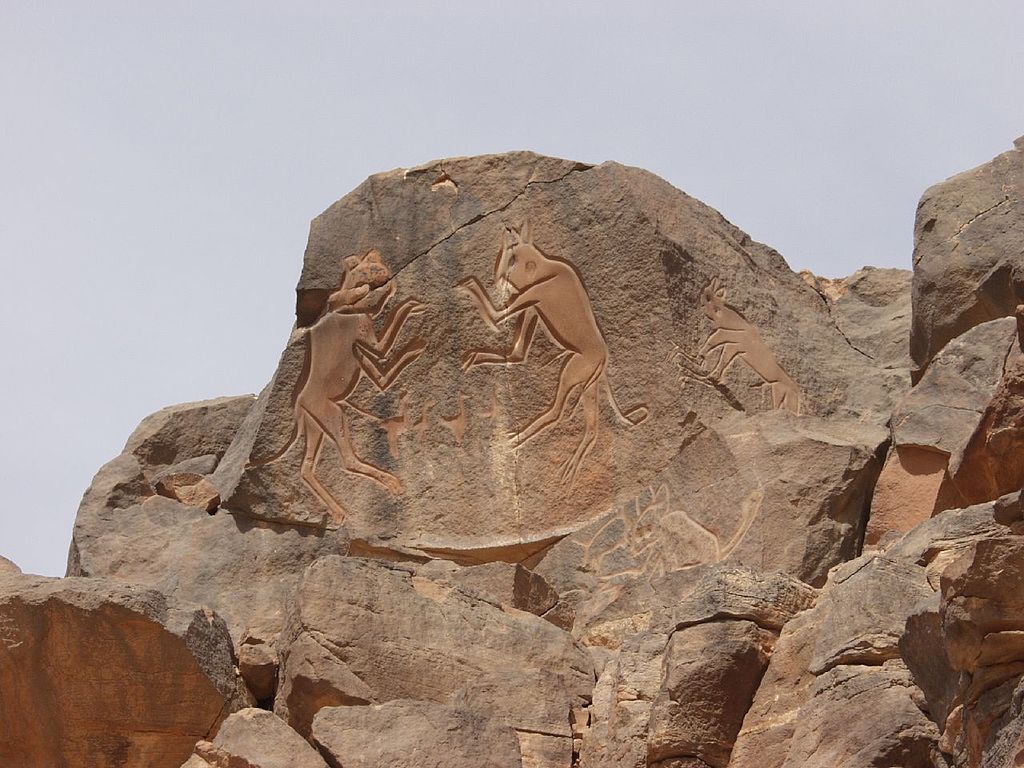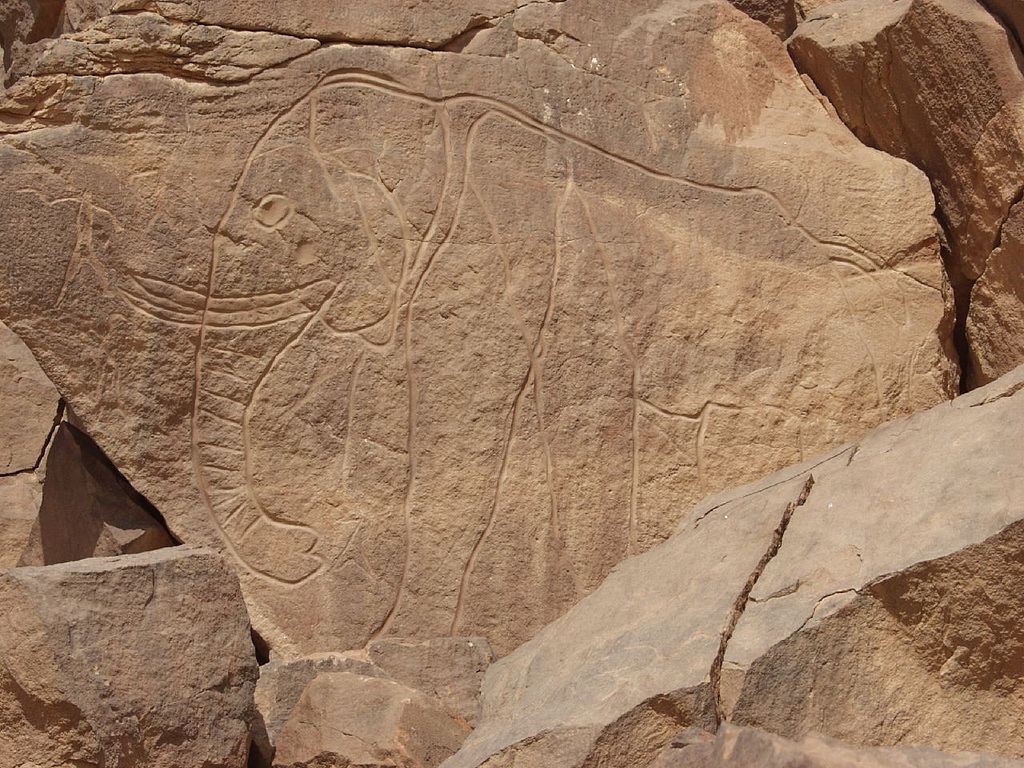Mesak Settafet
Mesak Settafet is a massive sandstone escarpment in southwest Libya. It sits at an elevation of up to 300m. The outcropping is abundant in prehistoric rock art and stone tools, particularly at the Wadi Mathendous site.
Rock Art
There are many distinctive and large prehistoric carvings at the Mesak Settafet escarpment, especially at Wadi Mathendous. Wadi Mathendous contains many petroglyphs of figures and objects, as well as other rock art. The chiseled animals include elephants, giraffes, aurochs, wildcats, and crocodiles. These rock engravings and cave paintings have been dated to the Neolithic period, around 8,000 years ago.
The outcropping's exposed stones are covered in a dark varnish or patina containing minerals not currently present in the sandstone. The microns-thick patina of iron and manganese oxides were likely laid down on the rock when the area was much wetter, up to 5000 years ago. The majority of the rock carvings in the area were probably first scratched then ground, likely with water, to create a purposeful finish.
Rock Art
The Mesak Settafet is littered with stone tools from the Pleistocene and later ages. A recent survey of randomly selected areas in the region estimated the tool density to be as high as 75 per 1 square metre (11 sq ft) in places. The researchers for the Libyan Department of Antiquities used this figure to call the escarpment the earliest evidence of an anthropogenic environment. The discarded tools and stone fragments are so thick that if their average were continued over the surface of Africa, there would be enough human-made stone tools and production débitage to be comparable in volume to between 1.3 and 2.7 times the volume of the Great Pyramid of Giza in stone tools and fragments every 1 square kilometre (0.39 sq mi) through Africa, or 42 to 84 million Great Pyramids. That is 2.1 x 1014 cubic meters of rock total, all made of fragments each averaging only 7 cubic centimetres (0.43 in3). The researchers estimated this figure and suggested it might be "conservative."
mesak-rockart
This page uses materials from Wikipedia available in the references. It is released under the Creative Commons Attribution-Share-Alike License 3.0.
References


